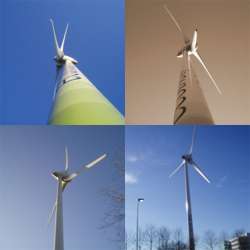Energy Procurement -- Renewables & Green Tariffs
Various energy strategies have been put in place by the UK government to meet CO2 emissions reductions targets of 20% by 2020, as set out in the UK Climate Change Programme (CCP) . There are 6 key strategy areas and these include:
- The Climate Change Levy (CCL) and Climate Change Agreements (CCA).

- Renewables Generation
- Combined Heat and Power (CHP)
- Emissions Trading
- Transport
- Buildings
Renewable technologies are defined by OFGEM and HM Customs and Excise as a generation technology that utilises its source of energy from wind, wave or tidal power, solar photovoltaics, hydro, landfill and municipal waste combustion. The Renewables Obligation (RO) is the key policy mechanism to support and develop these technologies. Renewables Obligation Certificates (ROC’s) are raised for each MWh generated and can be separately traded. The RO places a specified and increasing obligation on suppliers to supply a proportion of their power sales from renewable sources, commencing at 3% in 2002 and steadily rising to 20% in 2020. They can achieve this by either generating a proportion from renewables sources or by purchasing ROC’s or paying a penalty fee.
Increasingly, organisations wishing to reduce their carbon footprint, are considering buying green energy or investing in green technologies within their premises. Because of the increased interest from consumers, a green tariff attracts a significant premium but one that is partially offset by exemption from Climate Change Levy (CCL). Again, this is strictly defined by HM Customs & Excise, the administrators of the CCL.
Contact Us
Energen Limited, Brunel Science Park, Uxbridge, Middlesex, UB8 3PQ
.......E-mail: info@energen.co.uk ................Click here for contact form.
Services
- Interim Energy Management
- Energy Purchasing
- Site Surveys & Audits
- Air Conditioning Inspections
-
- Display Energy Certificates
- Energy Performance Certificates
- Utility Supply Contract Management
- Energy Monitoring & Targeting
- Metering Strategy
- Part L Approvals
- Carbon Reduction Commitment
- Carbon Footprinting
- Building Energy Log Books
- Renewables & Green Tariffs

